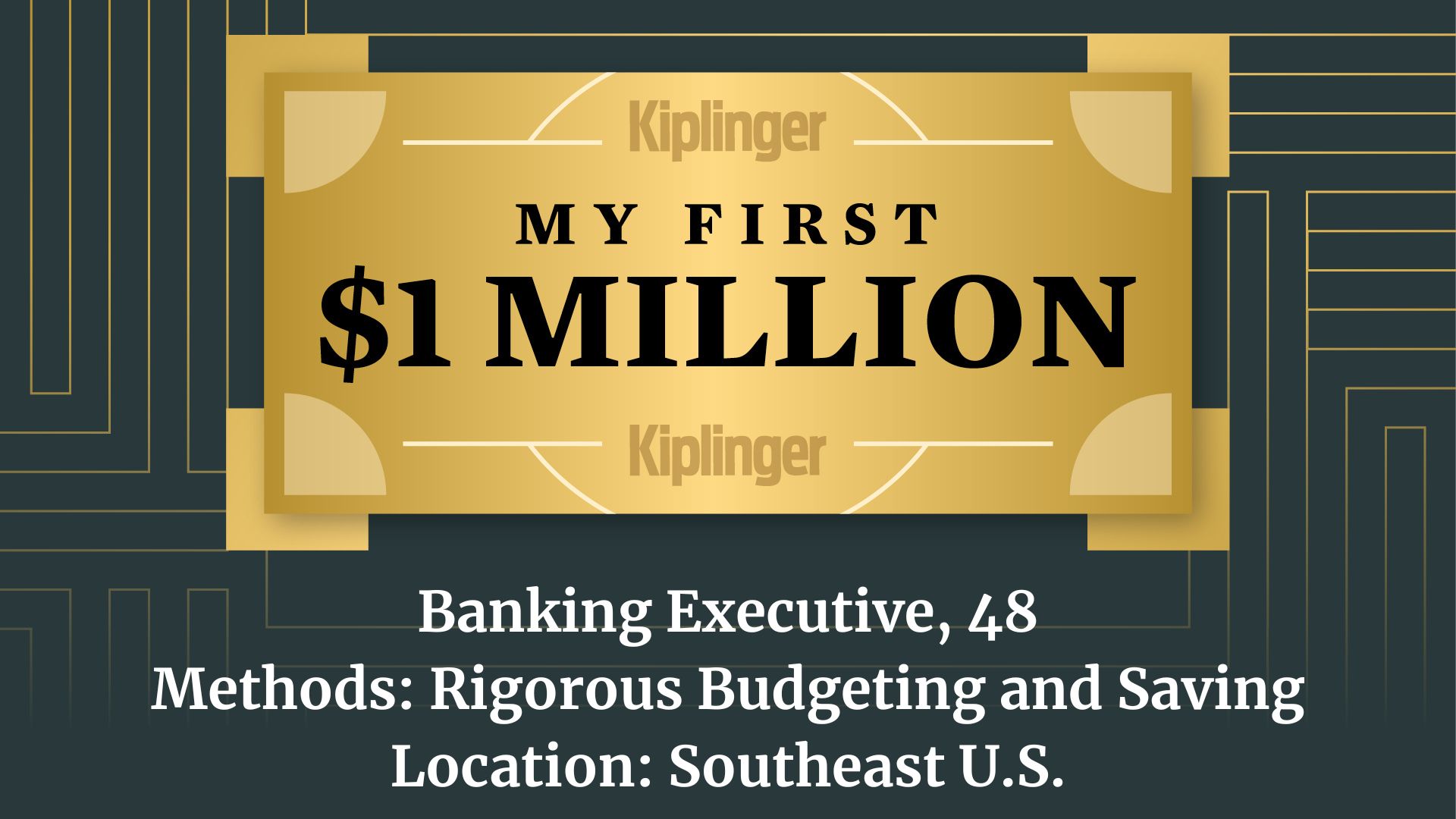What to Look Out for in Economic Data This Week (December 22-26)
It's a slow week for economic data, but all eyes will be on the shutdown-delayed release of third-quarter GDP data.


The holiday-shortened week is relatively light on economic data, though Wall Street will be tuned into Tuesday morning's release of gross domestic product (GDP) data. This will provide investors and economists the first look at third-quarter GDP as the initial release was delayed due to the government shutdown.
As a reminder, the stock and bond markets will close early on Wednesday, December 24, for Christmas Eve. Both will be fully closed on Thursday, December 25, for the Christmas Day holiday.
Economic data we're watching
Tuesday, December 23: Gross domestic product (GDP): Economic growth likely remained strong in the third quarter.
From just $107.88 $24.99 for Kiplinger Personal Finance
Become a smarter, better informed investor. Subscribe from just $107.88 $24.99, plus get up to 4 Special Issues

Sign up for Kiplinger’s Free Newsletters
Profit and prosper with the best of expert advice on investing, taxes, retirement, personal finance and more - straight to your e-mail.
Profit and prosper with the best of expert advice - straight to your e-mail.
Read on to see the entire weekly economic calendar of the most important upcoming economic reports scheduled to be released in the next several days. At times, we provide expanded previews and recaps for select reports.
Please check back often. This economic calendar is updated regularly. Bolded reports are those considered more noteworthy. All reporting times are in Eastern Time.
Reports that have been delayed due to the government shutdown are marked with an asterisk (*).
Monday (12/22)
There are no noteworthy economic reports scheduled for release on Monday, December 22.
Tuesday (12/23)
Time released | Economic report | Period |
8:30 am | Gross domestic product (GDP)* | Q3 |
8:30 am | Durable goods* | October |
10 am | The Conference Board's Consumer Confidence Index | December |
Shutdown-delayed GDP data likely to show economic growth remained strong in Q3
Gross domestic product data provides the broadest measure of economic growth. In the second quarter, GDP grew at an impressive 3.8% annualized rate as consumer spending and declining imports offset drops in investment and exports.
David Payne, staff economist at The Kiplinger Letter, says third-quarter GDP could come in around a "robust" 3%.
"Consumer spending on electric vehicles before the EV tax credit ended on September 30, plus the continuing ramp-up in business spending on artificial intelligence, will have supported third-quarter growth, despite continued weakness in housing, nonresidential construction and government spending," Payne writes in the Kiplinger GDP outlook.
Wednesday (12/24)
As a reminder, the stock market will close early at 1 pm Eastern Standard Time on December 24, while the bond market will close at 2 pm.
Time released | Economic report | Period |
8:30 am | Weekly jobless claims | Week ending December 20 |
Thursday (12/25)
There are no noteworthy economic reports scheduled for release on Thursday, December 25. As a reminder, the stock and bond markets will be closed in observance of the Christmas Day holiday.
Friday (12/26)
There are no noteworthy economic reports scheduled for release on Friday, December 26. The stock and bond markets are open and will observe regular trading hours.
Reporting schedules are provided Forex Factory and MarketWatch.
Related content
Profit and prosper with the best of Kiplinger's advice on investing, taxes, retirement, personal finance and much more. Delivered daily. Enter your email in the box and click Sign Me Up.

With over a decade of experience writing about the stock market, Karee Venema is the senior investing editor at Kiplinger.com. She joined the publication in April 2021 after 10 years of working as an investing writer and columnist at a local investment research firm. In her previous role, Karee focused primarily on options trading, as well as technical, fundamental and sentiment analysis.
-
 How to Safely Open an Online Savings Account
How to Safely Open an Online Savings AccountOnline banks offer generous APYs that most brick-and-mortar banks can't match. If you want to make the switch to online but have been hesitant, I'll show you how to do it safely.
-
 7 Ways to Age Gracefully Like the Best Stock Photo Seniors
7 Ways to Age Gracefully Like the Best Stock Photo SeniorsAs a retirement editor, I've gleaned valuable wisdom (and a lot of laughs) from one older couple that tops the seniors' stock photo charts.
-
 My First $1 Million: Banking Executive, 48, Southeast U.S.
My First $1 Million: Banking Executive, 48, Southeast U.S.Ever wonder how someone who's made a million dollars or more did it? Kiplinger's My First $1 Million series uncovers the answers.
-
 Time to Close the Books on 2025: Don't Start the New Year Without First Making These Money Moves
Time to Close the Books on 2025: Don't Start the New Year Without First Making These Money MovesAs 2025 draws to a close, take time to review your finances, maximize tax efficiency and align your goals for 2026 with the changing financial landscape.
-
 Is Fear Blocking Your Desire to Retire Abroad? What to Know to Turn Fear Into Freedom
Is Fear Blocking Your Desire to Retire Abroad? What to Know to Turn Fear Into FreedomCareful planning encompassing location, income, health care and visa paperwork can make it all manageable. A financial planner lays it all out.
-
 Gold and Silver Shine as Stocks Chop: Stock Market Today
Gold and Silver Shine as Stocks Chop: Stock Market TodayStocks struggled in Friday's low-volume session, but the losses weren't enough to put the Santa Claus Rally at risk.
-
 How to Master the Retirement Income Trinity: Cash Flow, Longevity Risk and Tax Efficiency
How to Master the Retirement Income Trinity: Cash Flow, Longevity Risk and Tax EfficiencyRetirement income planning is essential for your peace of mind — it can help you maintain your lifestyle and ease your worries that you'll run out of money.
-
 I'm an Insurance Expert: Sure, There's Always Tomorrow to Report Your Claim, But Procrastination Could Cost You
I'm an Insurance Expert: Sure, There's Always Tomorrow to Report Your Claim, But Procrastination Could Cost YouThe longer you wait to file an insurance claim, the bigger the problem could get — and the more leverage you're giving your insurer to deny it.
-
 Could a Cash Balance Plan Be Your Key to a Wealthy Retirement?
Could a Cash Balance Plan Be Your Key to a Wealthy Retirement?Cash balance plans have plenty of benefits for small-business owners. For starters, they can supercharge retirement savings and slash taxes. Should you opt in?
-
 Changes Are Coming for This Invesco Bond Fund
Changes Are Coming for This Invesco Bond FundThe Invesco BulletShares 2026 Corporate Bond ETF's bonds will mature in 2026. Here's what investors should do.
-
 7 Retirement Planning Trends in 2025: What They Mean for Your Wealth in 2026
7 Retirement Planning Trends in 2025: What They Mean for Your Wealth in 2026From government shutdowns to market swings, the past 12 months have been nothing if not eventful. The key trends can help you improve your own financial plan.